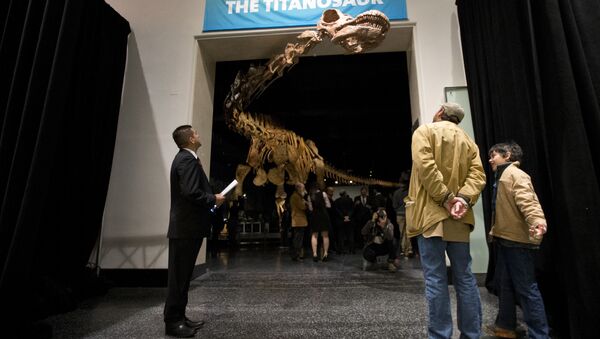Made between 70 and 90 million years ago, the fossilized footprint was found by scientists with Okayama University of Science working with Mongolian researchers.
"This is a very rare discovery as it’s a well-preserved fossil footprint that is more than a meter long with imprints of its claws," reads a statement from the university, according to International Business Times.
At 106 centimeters by 77 centimeters, the footprint is roughly the size of a human torso and believed to have come from a long-necked titanosaur.
Some of the heaviest dinosaurs to walk the Earth, titanosaurs are estimated to have weighed up to 90 tons. A cast mold of a titanosaur skeleton is on display at the American Museum of Natural History in New York City, since the actual bones are too heavy.
The herbivores grew to be 15 feet tall, with necks that could stretch as far as 50 feet.
Shinobu Ishigaki, paleontology professor at Okayama University, said the team plans to continue searching the area for additional fossils.
Earlier this month, Russian scientists uncovered the remains of a giant animal in the Kemerovo region of Siberia.
"Specific structural features of this dinosaur make it differ from its relatives, according to what was said in an official release. We cannot say that this reptile was, for example, sturdier than the others because it is unknown yet," Sergei Leshchinsky, head of the Laboratory of Mesozoic and Cenozoic Continental Ecosystems at Tomsk State University, told Sputnik.
This fossil was also found to be a titanosaur.



